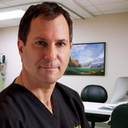Posted underEyelid Surgery q&a
How Common Are Long-Term Effects of Blepharoplasty - Especially Sunken Eyes?
I am 53 and planning lower and upper blepharoplasty in a couple of months. My concern is that in the years to come my eyes will look hollow, skull like. How common is such outcome? Should I worry about it?
Answers (8)
From board-certified doctors and trusted medical professionals
Dr. Kenneth D. Steinsapir, MD

Dr. Kenneth D. Steinsapir, MD
Oculoplastic Surgeon, Board Certified in Ophthalmology
Answer
Dr. William Portuese, MD
Dr. William Portuese, MD
Board Certified Facial Plastic Surgeon
Answer
Dr. Steven Wallach, MD
Dr. Steven Wallach, MD
Board Certified Plastic Surgeon
Answer
Dr. Darryl J. Blinski, MD
Dr. Darryl J. Blinski, MD
Board Certified Plastic Surgeon
Answer
Dr. Lisa Lynn Sowder, MD (retired) - Account Suspended
Dr. Lisa Lynn Sowder, MD (retired) - Account Suspended
Board Certified Plastic Surgeon
Answer
Dr. Marc Cohen, MD (retired)
Dr. Marc Cohen, MD (retired)
Oculoplastic Surgeon, Board Certified in Ophthalmology
Answer
More Eyelid Surgery Questions
See all Eyelid Surgery Q&AWE SEND PRETTY
EMAILS
What’s trending? Who’s turning heads? Which TikTok myths need busting? We’ve got you. No fluff, no gatekeeping—just real talk. Get our free, unfiltered newsletter.
